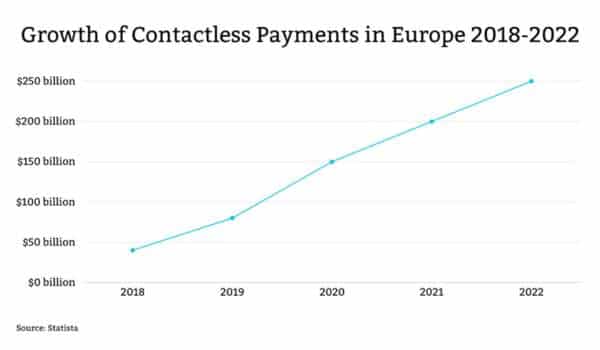
Technology is revolutionizing every aspect of travel. From planning itineraries to navigating foreign cities, technology empowers travelers to enhance their European adventures.
This article explores the innovations that are essential for smooth and memorable trips across Europe.
Smart Navigation Keeps You on Track
Finding your way in unfamiliar locations is now easier than ever with GPS-powered apps.
Browse our online courses on meditation, positive thinking, overcoming procrastination, and freedom from distractions.
Google Maps has over 1 billion global downloads, making it the undisputed leader among navigation apps. Its real-time traffic data and alternative routes help users reduce commute times by up to 23%.
Whether driving, walking, or using public transport, Google Maps keeps travelers moving.
Augmented reality (AR) adds a new dimension to navigation and sightseeing. TripAdvisor’s AR feature has been embraced by 67% of users, enabling interactive experiences at landmarks.
AR apps transform the way travelers explore destinations by overlaying informational content in the real world through smartphones.
Tips for Maximizing Google Maps for European Travel
When preparing a trip to Europe, download offline maps for desired destinations in Google Maps. This allows navigation without mobile data access.
Enable location sharing to meet up with travel companions. Set up public transport layers to see metro, bus, and train options. Toggle the traffic view before driving to avoid congestion.
Frequent zooms in and out reveal more landmarks and details to aid orientation.
Importance of eSIM in Europe Travel
Having connectivity across Europe makes travel easier. However, managing multiple SIM cards can be complicated. An eSIM solves this by letting you activate the service remotely.
eSIM provides reliable connectivity throughout your European travels without juggling multiple SIM cards. eSIMs or embedded SIMs are digital SIM cards built into your phone. They allow you to activate cellular service in over 190 countries remotely without swapping physical SIMs.
Before your trip, set up a Europe eSIM data plan through Holafly Eurosim provider for hassle-free travel. You’ll then have seamless service everywhere you go, with one phone number and data plan valid across all your destinations.
eSIMs eliminate roaming charges and the need to get different SIMs in each country. For smooth, continuous connectivity as you travel across Europe, an eSIM is a smart choice.
Top Augmented Reality Travel Apps
Also, TripAdvisor’s app and other top AR travel apps for Europe include Sygic Travel, Geo Travel, and Wikitude. These overlay rich content onto camera views of attractions, from audio guides to historical images and more.
Navigation AR apps like Mapxus provide directions overlaid onto the physical landscape in front of users.
Language Tools Break Down Barriers
Overcoming language barriers is critical for immersive European journeys. AI-powered translation apps now enable seamless cross-cultural communication.
Google Translate processes over 100 billion words daily, exemplifying its reliability. Meanwhile, Microsoft Translator offers offline functionality, allowing users to access translations anywhere, even without an internet connection. This proves invaluable in remote locales.
For quick verbal interactions, voice-activated devices like Pocketalk reduce translation errors by 74%. With speech recognition accuracy over 95%, language is no longer a barrier for intrepid travelers.
Maximizing Translation Apps
Download dictionaries and neural machine translation packs for use in Google Translate and Microsoft Translator’s offline modes before traveling.
For complex conversations, type out long-form thoughts for apps to translate full paragraphs. Edit as needed for clarity. Carry a pocket translator like Pocketalk for rapid back-and-forth dialogue. Have a physical bilingual dictionary on hand as a backup.
Learning Common European Phrases
Before international trips, learn basic greetings, questions, and phrases in the local language. Memrise, Duolingo, Drops, and other apps make bite-sized language learning digestible.
Start by mastering “hello”, “goodbye”, “please”, “thank you”, and other frequent niceties. Gain confidence for real-world interactions.
Hotel Tech Enhances Comfort
Innovations in hospitality technology enable European travelers to experience greater convenience and sustainability.
Hilton’s Connected Room technology in over 5,700 rooms worldwide enables smartphone control of room features and temperature. This results in a personalized stay while reducing energy consumption by 20%.
Virtual reality (VR) tours are also transforming the booking experience. By offering virtual previews of hotel facilities, VR drives a 17% increase in direct bookings. With 64% of travelers now influenced by VR in decision-making, the technology provides invaluable insights.
Researching and Booking Accommodations
Use meta-search sites like TripAdvisor and Kayak to compare thousands of hotels based on location, ratings, amenities, and price.
Sort by filters like free cancellation, WiFi quality, or eco-friendliness. View 360-degree room tours and property photos. Then, book on the hotel’s site for the best rates.
Utilizing Mobile Access at Hotels
Check-in and access your room using your smartphone’s digital key at hotels that offer mobile apps.
Control temperature settings, lighting, TV, and more from your device via in-room automation.
Chat 24/7 with hotel staff through instant messaging for a quick response to any needs or questions during your stay.
Contactless Payment and Transportation
Using a card or smartphone for payments and transportation is now the norm across Europe, ensuring hassle-free access.
Mobile payment services like Apple Pay and Google Pay enable secure contactless transactions through QR codes or NFC terminals. Their integration with public transport networks in major European cities streamlines ticket purchases and access to trains, buses, and trams.
By adopting contactless payments, travelers cut risks of fraud, avoid currency exchange fees, and bypass language barriers inherent at cash registers. Digital currency simplifies travel.

Researching Public Transport Options
Use sites like Rome2Rio to map multi-mode transport routes that combine trains, buses, trams, metro lines, and more between destinations. Official city transport apps detail up-to-date schedules and status alerts for disruptions.
Buy mobile tickets and passes in advance for easy access.
Check required travel documentation between countries.
Managing Money Abroad
Before international trips, notify your bank to prevent account freezes.
Withdraw local cash from ATMs with low conversion fees using debit cards. Let credit cards handle the bulk of purchases for fraud protection and points or cash-back perks.
Enable mobile payments like Apple Pay for cashless tap transactions.
Use multi-currency accounts like Wise for cheaper transfers overseas.
Stay Connected On the Go
Portable Wi-Fi devices and international roaming plans prevent travelers from ever being disconnected while traversing Europe.
Pocket Wi-Fi rentals from companies like Jetpack provide reliable connectivity across many devices.
For access, roaming packages like Airalo offer affordable data in over 140 countries without tying users into contracts.
Choosing a Pocket WiFi Rental Company
Top global WiFi rental providers include Jetpack, Skyroam, Hippocketwifi, and GlocalMe G4.
Compare data plans up to 5G speeds across suitable European coverage geographies.
Ensure pick-up and drop-off logistics at airports, hotels, or city center locations.
Some vendors ship devices to hotels in advance. Choose unlimited plans for heavy data usage.
Selecting a Local SIM Card
Purchasing local SIM cards after arriving allows using temporary cell phone numbers for each country at lower rates.
Leading Europe providers like Vodafone, Orange, TIM, O2 and Three feature differentiated roaming packages with free data allowances. Swapping SIM cards takes only minutes for flexible connectivity.
Using Public WiFi Hotspots
While convenient, public WiFi poses security risks from eavesdropping criminals.
Enable VPN usage to encrypt browsing sessions, blocking intruders. Configure smartphones to ask before connecting to networks and avoid doing so for sensitive activities like banking or shopping.
Key Takeaways
- Navigation apps with real-time data like Google Maps optimize routes and commutes in unfamiliar locales. Download offline areas beforehand while on WiFi.
- AI translation services break language barriers for seamless cross-cultural communication. Carry a pocket translator or dictionary as backup.
- Contactless payments integrated with transport networks simplify purchases and travel across Europe. Notify banks before travel and track accounts.
- Portable Wi-Fi devices and roaming packages provide affordable connectivity everywhere. Start by comparing providers’ coverage maps.
Embracing these essential tech tools is key to getting the most out of Europe’s magnificence. Let technology guide you towards adventure. The destination awaits.
FAQs
What is the best navigation app for traveling across Europe?
Google Maps is the most used and accurate navigation app for Europe travel, providing real-time traffic data, public transport integration, and route optimization based on current conditions. Download offline maps ahead of time for each destination.
Can translation apps handle complex dialogues?
AI-powered translation services like Google Translate may struggle with nuanced dialogues. For extended conversations, a human translator is still ideal. But apps provide enough accuracy for simple transactions and interactions. Type out long paragraphs for better context.
How do I use mobile payments while traveling?
Only use official apps from recognized providers like Apple Pay or Google Pay. Enable passcode or biometric login on your device. Track your transactions and account activity daily. Notify your bank provider immediately in case of any suspicious charges.
What’s the best way to access mobile data abroad?
Portable WiFi devices offer the most flexibility and value for groups. Local SIM cards purchased in each country allow using temporary cell numbers at low rates. Roaming packages work with your existing number but cost more. Compare options based on countries visited and group size.
How much mobile data is needed while traveling Europe?
Most travelers need 2 to 4 GB per week when including some video/music streaming, web browsing, and using apps. Opt for unlimited mobile data if hot-spotting many devices or using each day. Otherwise, 10 to 15 GB for two weeks should suffice with selective connectivity over Wifi. Monitor usage.

